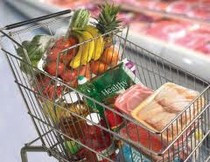
By Gary Abdullah and Chuck Gill, Penn State
UNIVERSITY PARK – Members of Congress, faith-based organizations and other groups this month participated in observances such as the National Food Stamp Challenge and National Hunger and Homelessness Awareness Week to draw attention to the daily struggles of the unemployed and poor. A specialist in Penn State’s College of Agricultural Sciences said these special-attention events also illustrate the complexities of modern food insecurity.
The Food Stamp Challenge dared religious and political leaders and others to try feeding themselves for a week on $4.50 a day — the average amount received by anyone on the federal Supplemental Nutritional Assistance Program, previously known as food stamps. Elise Gurgevich, state coordinator of Penn State Extension’s Nutrition Links program, said such demonstrations serve a good purpose but miss the harder part of life on food stamps.
“It is an eye-opening experience for legislators to figure out how they are going to make that money stretch, and how they’re going to get enough calories into their diet while eating nutritiously,” she said. “It’s doable, but it takes planning and work.”
Gurgevich said during these special events, people can rise to the challenge and do it for a short period because they know they soon will resume their normal routines and diets. “But people who rely on SNAP benefits to feed their families don’t do it for just a week,” she pointed out. “When those sacrifices become your lifestyle, it’s much more of a burden.”
Mary Lou Kiel, training specialist for Penn State Nutrition Links, explained that the average person needs to be educated or trained to be a better shopper.
“If you really want to eat a nutritious diet on such a limited budget, you need to put in the time looking at store advertising circulars, finding out what’s on sale, planning your meals in advance and figuring out how what you buy for one meal can be used for a second meal on day two or three,” Kiel said. “You have to stick to your plan and not be swayed by what you see in the store.”
Kiel noted that Penn State Extension provides training across Pennsylvania on shopping smarter, determining if generic brands are as nutritious as higher-priced options and using unit pricing to get more ounces for less money. “The classes we offer are very helpful to people, and they learn a lot. All of us can benefit from being better shoppers, but people living on SNAP benefits need to learn all the tips about what are the better choices.”
The Nutrition Links program offers free nutrition-education programs to participants eligible for public assistance to develop the knowledge and skills necessary to achieve a healthful diet on a limited budget. Participants are taught in small or large groups or individually. Programs are tailored to be appropriate for the age, culture, reading ability and physical or developmental limitations of a particular audience.
With a national unemployment rate hovering near 9 percent and 45 million people receiving SNAP benefits nationwide, people who don’t have as much experience with economizing really have to focus on it, Gurgevich said. The tips offered by Extension nutrition advisers present both practical advice and a new way of thinking for people unaccustomed to living on a limited income.
“There are a lot more people who now need Nutrition Links services because they haven’t grown up being as aware of economizing options,” she explained. “So we’ve had to focus our program more on shopping and how to stretch your food dollars and supplies, in addition to food preparation and nutrition.
Experts point out that sometimes it’s a tradeoff between spending time and spending money. “For instance, you can buy prepared salad in a bag, but it’s much cheaper if you buy lettuce, wash it yourself and put it in your own plastic bag,” Keil said “Buying meat in the economy package and breaking it into sizes that work for your family usually is less expensive.”
But she cautions that buying in larger quantities may not be cheaper if you are not able to use it all before it spoils. “Also, you can use coupons, but don’t buy things that you don’t really need just because you have a coupon,” she said. “Sometimes even when you have coupons for purchases on brand-name products, the store brand is still more economical.”
Gurgevich advises people who are new to watching their budgets that canned and frozen fruits and vegetables are also very nutritious, and those products may be more cost-effective than fresh produce, depending on the season. “Fresh foods are still the best, but you shouldn’t limit yourself only to fresh.”
A useful tool in trimming the family food budget is the U.S. Department of Agriculture’s new Choose My Plate campaign. Developed to encourage consumers to build healthy eating habits based on the 2010 Dietary Guidelines for Americans, the system uses a colorful plate diagram to encourage consumers to make healthy choices. Kiel said planning meals around it also can save money.
“Make sure that you’re getting your fruits and vegetables to fill half of your plate,” she said. “The protein, which is the most expensive part, should fill only a quarter of your plate. Make 50 percent of your grains whole, and pick low-fat dairy choices for either milk or cheese. You’ll combine good nutrition with low cost.”
Penn State Extension’s Nutrition Links program provides low-income Pennsylvanians with information and training to make limited food dollars go farther. In the 2010-2011 programming year, the program reached almost 7,000 Pennsylvania families, benefitting more than 21,000 people. And the number of new families enrolled increased by almost 70 percent during the reporting period. Learn more online at http://extension.psu.edu/healthy-lifestyles/nutrition-links.
For more information, contact Elise Gurgevich at 814-863-1787 or eag107@psu.edu.